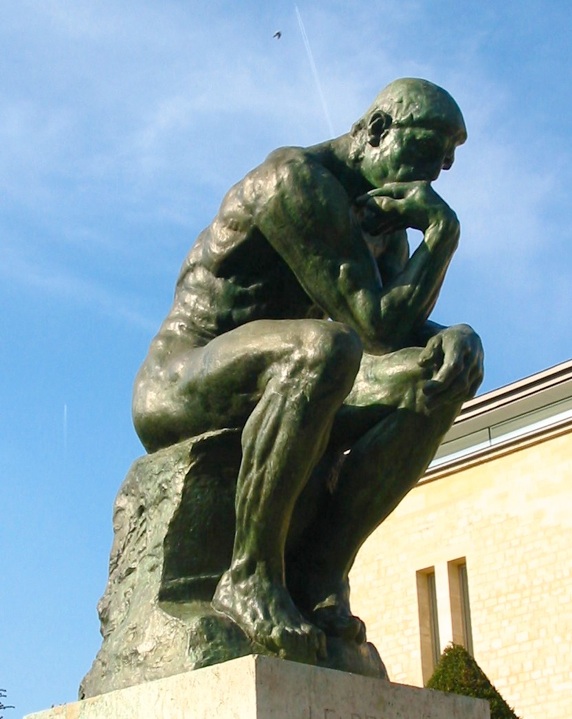Rodin






Auguste Rodin, “The Thinker,” 1879-1889


On top, a picture of The Thinker in Paris; below, behind the posing kitty, a bookend of The Thinker. The top: can be Beautiful; The bottom: most often, would be Good, a tool to hold back books.
Auguste Rodin (1840-1917) French sculptor, while not aiming to rebel against classical sculpture, his work is considered to be the birth of modern sculpture. While many of his models are classical and mythological figures, sometimes his models are the downtrodden, neglected of society. Their forms, both the mythic and everyday, embrace the classical emphasis of realistic muscularity and beauty, and sometimes vulgarity and horror, too. His forms all conveyed emotion. His first entry in a Paris Salon (rejected, 1864) was “The Man with the Broken Nose,” modeled on an old porter in the neighborhood, and unconventionally displayed with the head ‘broken off’ at the neck, rather than a proper ‘bust,’ and hollow, an unfinished back, rather than complete all the way around. While his “The Gates of Hell” may be the most provocative of his works, based upon Dante’s Inferno, which he worked on most of his life, never completing it, yet, he is most known for his work “The Thinker,” which had actually been made first to go within the gates, then became its own work. The Thinker is a bronze and marble sculpture (Musée Rodin, Paris) and is the adopted symbol for philosophy (although, it was reputedly first named The Poet, being a figure based upon Dante’s Divine Comedy for The Gates of Hell project—it was to be Dante himself, contemplating a poem, before the gates). 1880 was the first plaster version, the large bronze cast in 1902, and presented publicly in 1904, placed in front of the Panthéon in 1906, then moved to the now-museum in 1922 (then, the Hotel Biron) (although there are many large-size bronze casts of this work around the world, from Japan to Russia to Cleveland).


